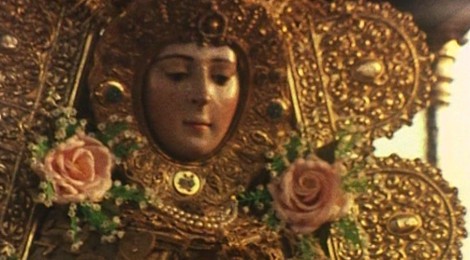
Speaking Truth About Power: Documentary, Censorship, and ROCÍO
Today, Mediático is delighted to present a fascinating essay by one of our regular contributors Rebecca Naughten. Rebecca has a blog on Spanish cinema, Nobody Knows Anybody.
I’m currently researching contemporary Spanish documentary as part of my interest in ‘el otro cine español,’ but I’ve become sidetracked by a documentary from a completely different era. My interest started with a book review of El caso Rocío: La historia de una película secuestrada por la transición [The Rocío Case: The story of a film hijacked by the Transition] in Caimán Cuadernos de Cine (May 2014): intrigued by the title and the fact that the book came with two DVDs–one the uncensored version of Rocío (Fernando Ruiz Vergara, 1980), the other a documentary (El caso Rocío (José Luis Tirado, 2013)) about the making of the film and the legal repercussions)–I ordered it. Then I watched Rocío, and promptly fell down a rabbit hole.
The most straightforward way to approach the matter is probably to start from the outside and work my way in – to outline the cause of Rocío‘s notoriety before discussing the film itself. Rocío is about the annual pilgrimage to the Virgin of Rocío in the region of Huelva (Andalusia) but, in focusing on the history of the specific locale of Almonte (a hive of activity in relation to the pilgrimage), Fernando Ruiz Vergara also uncovered and recorded oral testimony of repressions suffered in the aftermath of the military coup in 1936. It was this latter aspect – specifically the naming of names, as the facts (ninety-nine men and one woman were killed in Almonte in the months following the coup) were not disputed – that was the cause of the film’s hijacking by the Spanish judiciary. The descendants of the man ‘named’ – in an act of self-censorship the filmmakers had actually cut the sound at the moment his name was said and presented an image of him that was partially obscured – as the ringleader of the repressions (José María Reales Carrasco, former mayor of Almonte) presented a criminal complaint to the courts in Seville in 1981. They accused director Fernando Ruiz Vergara, screenwriter Ana Vila, and the onscreen witness Pedro Clavijo of injuring the reputation of their father (who was deceased), deriding the Catholic religion, and publicly insulting the ceremonies held in honour of the Virgin of Rocío. The judge ordered the removal of all copies of the film from the public domain at the time of the complaint, and by the time the case reached the court the following year the complainants were seeking prison sentences for all three defendants on the charge of slander, in addition to a fine for the ‘injuries’.[1. The factual information regarding the trial is taken from El caso Rocío (book and film) and Alvarado (2010).]
The slander charge would be dropped. In the documentary El caso Rocío, Francisco Baena Bocanegra (the lawyer who represented Ruiz Vergara and Vila) says that if the slander charge had stayed then the defendants would have won because they could meet the requirements of proof, and this was precisely why that charge was dropped but the more difficult to defend ‘injury’ stayed (take a moment to think about the Kafkaesque nature of that set of circumstances). By this stage the frightened 73-year old Clavijo denied making his onscreen statements (a clearly desperate measure, since it obviously was him onscreen) – in response, and of their own volition, seventeen of the older residents of Almonte travelled to Seville to back up their neighbour’s statements for the court but the judge did not allow their evidence to be admitted. After this development Fernando Ruiz Vergara insisted on taking full responsibility for the film, which meant that the charges against Vila and Clavijo were dropped – the director was sentenced to two months and a day and ordered to pay a fine of 50,000 pesetas (today, 300€ plus inflation) and compensation of 10,000,000 pesetas (today, 60,000€ plus inflation), ‘in civic responsibility’, for the injury done to José María Reales Carrasco. As part of the sentence the film was also prohibited from being distributed or shown within Spain unless the two sections that referred to Reales Carrasco were removed. Ruiz Vergara refused to let the distributor cut the film, but in 1984 when the sentence was confirmed by the Supreme Tribunal, the cuts were made – the director fought to have intertitle cards inserted to indicate when a sequence had been censored. The film was shown in Spain in that form after 1984 (José Luis Tirado has uploaded that version to Youtube with English subtitles), but the version that appeared on Spanish television in the 1990s lacked the intertitle cards or any acknowledgement of the censorship. Meanwhile Fernando Ruiz Vergara moved to Portugal in self-exile and would not direct another film (Tirado interviewed him shortly before his death in 2011).
What makes the case even more jaw-dropping is that it took place post-Franco, after 1977 and the end of official censorship, and towards the end of the Spain’s transition to democracy – the decisions by the court span both the Transition and democracy. The judge, Luis Vivas Marzal, would later say in relation to Rocío that ‘es indispensable inhumar y olvidar si se quiere que los sobrevivientes y las generaciones posteriores a la contienda, convivan pacífica, armónica y conciliadamente, no siendo atinado avivar los rescoldos de esa lucha para despertar rencores, odios y resentimientos adormecidos por el paso del tiempo’ (it is essential to bury and forget if one wants survivors and subsequent generations to the dispute, to coexist peacefully, harmoniously and conciliatorily, it not being wise to stoke the embers of that struggle to revive resentment, hatred and bad feeling numbed by the passage of time) [2. All translations into English are my own.] (Espinosa Maestre 2013: 38). This was the prevailing attitude, commonly referred to as ‘the pact of silence’, of the Spanish Establishment during the Transition – let sleeping dogs lie. The problem is that while the victors of the Civil War had almost forty years in which to commemorate their dead, the losers were condemned to silence during the dictatorship, unable to publicly mourn their dead and indeed often not knowing exactly where their dead were buried – they were now being told to move on and not reopen old wounds. As historian Pura Sánchez says in Tirado’s film, what the Rocío case highlights is that while the pact of silence is presented as a consensus, it was actually an imposed consensus because the sides involved were not equal.
There is one notorious instance of a drama (representing historical events) falling foul of censorship during the Transition: Pilar Miró, despite being a civilian, was hauled before a military tribunal because of what her film El crimen de Cuenca (1981) depicted of the Civil Guard. But documentary films, specifically those that addressed things the Establishment wanted off limits (which is why the slander charge was dropped in the Rocío case – because the evidence presented by the defence would have very publicly opened a can of worms), bore the brunt of ‘unofficial’ censorship or officious obstructiveness (which could take the form of withholding or blocking funding, or threatened legal sanctions): the more famous examples are El proceso de Burgos (Imanol Uribe, 1979) and Después de… (Cecilia Bartolomé and Juan José Bartolomé, 1981). Alejandro Alvarado argues that the obstacles placed in front of such films – whether during production, distribution, or exhibition – further marginalised the documentary in Spain and was partly responsible for the near disappearance of the form for more than two decades after the early 1980s (2013: 67). But even within this context, Rocío seems to be a case apart because of how long the censorship has endured. In 2005 an attempt was made to screen the original version of the film as part of a conference on ‘historical memory’, but the Reales family resurfaced and amazingly (given the momentum behind the historical memory ‘movement’ since the millennium) managed to stop the screening (the intertitled version was shown instead). In 2014, it is still illegal to exhibit Rocío uncut in Spain – the uncut DVD that comes with the book has a label stating ‘edición limitada como documento para El caso Rocío‘ (limited edition as a document for The Rocío Case): the classification of the documentary as a document rather than a film would appear to be how they have got around the legal issue in this instance.
El caso Rocío (subtitled trailer) questions whether Fernando Ruiz Vergara was truly aware of what he was getting himself into by including the contentious sections – but given that he and Ana Vila were threatened during the filming (and the subsequent self-censorship), he must have known that trouble lay ahead. For his part, he says in Tirado’s film that once he had seen their faces there was no possibility of leaving out that part of the town’s history (he also points to the need that people had to talk about what had happened). While the various historians interviewed by Tirado emphasise Rocío’s importance as a social document, both as a celebration of Andalusian identity, and as a nascent example of what would become the movement to reclaim historical memory in Spain, two of the other participants – Isidoro Moreno, an anthropologist who was one of the talking heads in Rocío, and Vitor Estevâo, who was DoP and one of the camera operators – argue that Ruiz Vergara could have concentrated solely on the religious pilgrimage and still have made more or less the same film (that is how Moreno phrases it, but Estevâo is almost dismissive, saying that the director could have just made a ‘pretty’ film and saved himself a lot of trouble). Could he have left out the names of those killed in Almonte in 1936? Possibly, although I think Ruiz Vergara would have seen that as a betrayal of the trust placed in him by Pedro Clavijo, and it would have had a ripple effect through the rest of the film. The emphasis placed on the sequences relating to the incidents in 1936 (and the resulting censorship) in what has been written about Rocío makes it sound as if those elements were almost ‘tacked on’ to a documentary about religious pilgrimage. But they are tightly woven into the fabric of the film because Ruiz Vergara (who was also the editor) traces the history and roots of the religious tradition and how they are interlaced with (and mirror) the social hierarchies of the area – the families wielding economic and political power in the area are also at the centre of the hermandades de la Virgin del Rocío (‘brotherhoods’ – the local bodies who organise certain aspects of the celebrations for their members), and José María Reales Carrasco was one of the founders of the main hermandad in Almonte. The director constructs a mosaic in which all the pieces matter if you want to see the full picture.
The film starts with a potted history of Christianity in Spain, the arrival of the Berbers in 711 AD and resulting Islamisation of parts of the Iberian peninsula, followed by the Church’s eventual triumph and its mission to integrate itself into rural communities. In parallel, the cult of the Virgin began, the relative scarcity of women (who were more susceptible to the diseases of the time) conferring upon them a status that was reflected in the worshipping the Virgin. After this opening ten minutes, Fernando Ruiz Vergara and writer Ana Vila continuously weave back and forth between the region in the then-present (the footage of the romería [pilgrimage] was filmed in 1977 with additional material collected during the editing process the following year), the way in which the tradition had been shaped to suit both the Church and the more powerful local families,[3. Both had economic interests in common stemming from land ownership, while the hermandades (usually headed by those same families) are profitable lay organisations with obvious religious connections. Ruiz Vergara researched parish records for the financial information, including details of profits, relating to the romería of 1975.] and how politics and religion (i.e. the Second Republic as a secular State) connect to the repressions in the area in the aftermath of 1936.
Video clip (Rocío, 11:13 – 12:28)
However the next sequence is the first hint of the striking visual composition that will mark the footage of the veneration of the Virgin of Rocío, a.k.a. La Paloma Blanca (the White Dove). It starts with José Hernández Díaz (then-Professor of Art at Seville University) explaining the evolution of the Virgin statues – the original statues were mutilated by the worshippers so as to better dress them in ostentatious finery, and eventually they were mounted onto a frame so as to make them the height of an actual woman. We then watch two nuns divest a Virgin statue of its finery and take it apart so as to reveal the ravaged body underneath.[4. The role of women is very restricted in relation to the romería – the dressing of the Virgin is one of the few roles of importance that they are shown enacting in Rocío. See Sánchez (2013) for further details.] In what is an intensely theatrical presentation, in a darkened room so as to highlight the white and gold of the statue and the white of the nuns’ habits, Ruiz Vergara keeps the camera close, sometimes with extreme close-ups of hands intimately unfastening and removing layers of clothing and appendages (first hands, then arms), but also regularly pulling back to show the statue in various stages of deshabille and disintegration. The sequence stands as a metaphor for how Rocío functions as a whole: our attention will be drawn to specific elements of this religious tradition and their significance within this geographic area (exploring the social, economic, and political contexts at play), with the filmmaker and his team capturing close detail but also continually pulling back to show how these specifics interconnect and fit into the bigger picture (and in the process arguably revealing a fairly ugly framework in operation beneath the celebratory and often hauntingly-beautiful surface).
Filming in 16mm on a combination of five cameras, Fernando Ruiz Vergara and his team embedded themselves in the pilgrimage of 1977 – living and sleeping alongside the pilgrims – because the director (who was from Seville and had attended previously) knew that if they left for any amount of time, they would miss the emotion of the event and key occurrences. Camera operators could film whatever caught their attention but were also instructed to look out for certain things by Ruiz Vergara (for example, the small children forcibly being made to crowd surf in order to touch the Virgin). The camera positioning and movement noticeably change as the romería progresses; this relates to who has ‘control’ at a given moment, the filming being more immersive when ‘the crowd’ (as opposed to those higher up the social hierarchy) takes over. During the initial procession, which is conducted on horseback and in horse and carts, the cameras stay further back, at one remove and observing from the outside. The voiceover (at this point, Isidoro Moreno) tells us that this opening stage is a reaffirmation of the pre-industrial values of an agrarian and aristocraticized society – participation in the procession is a demonstration of economic standing via the ownership of horses (but also being able to afford the necessary provisions and transport). When the procession arrive at their destination, the pedestrian crowd become evident, but at this point they are there as an audience to the equestrian class display rather than active participants.
When night falls and the revelry of the broader class base begins, the camera begins to move in closer, occasionally being jostled by the dancers, with the image often coloured by the flares and lights in the crowd. People are aware of being filmed and look openly into the camera – one man spots the camera and puts his arm around the woman next to him, only for her to realise that they are being filmed and shrug his arm off her shoulder, looking askance at him. At the open air Mass the following morning, the camera withdraws to a distance again – surreptitiously capturing people yawning and otherwise looking the worse for wear after their nocturnal activities – but once the more formal ceremony is over the camera again moves amongst the masses, in ever closer proximity. Ruiz Vergara continues to overlay the footage with voiceovers explaining how historical, political, and social contexts have shaped the romería, and it is between the footage of the Mass and the next stage that the censored sections appear. The sequence explains that the hermandades started in the 17th century, but a significant concentration of them were founded after 1931 and the start of the (secular) Second Republic. Ruiz Vergara connects this with the increased ‘promotion’ of the Virgin of Rocío in the period and parallel tensions stemming from the requirement to remove religious symbols from official institutions, in line with a secular State – the killing of the ninety-nine men and one woman (people who supported the Republic) in 1936 is presented (with support from Pedro Clavijo’s testimony) as a settling of scores. After this sombre sequence the film presents some of its most stunning (and stunningly-strange) imagery. During the next part of the romería, the participants (by this point almost exclusively male) are in pursuit of a frenetic state of possession – or a kind of religious fervour – that begins at daybreak with the ‘seizing of the saint’.
With the camera handheld and in a low position, this initially plays out like the start of a riot with men pushing to clamber over barriers and the mass of people breaking out of containment to climb onto (and fall from) platforms within the Church. The cameras are so close to the action that they put us in amongst it and the confusion intensifies – are the men working together or against each other? what are they actually doing? (there is no voiceover during this footage). A series of overhead shots then show the densely-packed (male) bodies swarming around the Virgin, the framework of her pedestal swaying as the crowd staggers forward almost fighting each other to get closer to the statue, screams audible on the soundtrack. The heat is palpable and the sudden cut to outside, the sky finally visible, is like a gulp of fresh air in this heady atmosphere.
Ruiz Vergara then alternates between shots from in amongst the crowd, jostled, and looking up at either the Virgin or people and children riding on the shoulders of others, or a vantage point slightly above the crowd (as if the camera operator were being carried, which Estevâo says often happened because the crowd lifted them up to give the camera a better view) surveying the participants, some of whom appear almost punch drunk, overcome by emotion or the heat – flushed faces with shining eyes stare into the camera. The camera slowly pulls out to a wide shot revealing the size of the gathering, with the Virgin the serene eye of the human storm (we have already seen this shot – it is briefly inserted into the sequence where the nuns undress the statue). As the swirling mass carry her back into the Church, there are close-ups of the faces of those crushed around the bottom of the pedestal and of hands grasping the poles at the four corners, all emphasising the physical experience of participation and generating a sensation of airless claustrophobia in the viewer. An aggressive human chain forms (as much elbowing each other out of the way as joining together) to half pull, half bounce, the statue back into the intended position. The heat, sweat, and dust are tangible in the hazily steamed-up images captured by the cameras, once again immersing the viewer into the crowd’s experience; the camera style and editing of the sequence is shaped by, and aestheticises, the breathless giddiness of the crowd.
Every seven years, a second procession is held in August (the annual event is held in the Spring) in which the Virgin (this time dressed as a shepherdess) is carried from the sanctuary in Almonte to the hills some fifteen kilometres away. Although just as crowded, this is less frenzied; the camerawork is steadier, and takes a more observational position in comparison to the seizing of the saint. The episode takes on characteristics of a semi-mystical event – for example, via the non-diegetic music on the soundtrack (quite distinct from other sequences), and the way the statue is filmed from inside the Church as it exits, causing it to be backlit and momentarily look like a mirage in the shimmering heat – with greater emphasis given to the pagan over the formally-religious. Once night falls and the procession travels through dusty darkness, the cameras move in closer again (and in contrast to the earlier night sequence, seemingly provide the only light source apart from fire) to capture human chains eerily emerging out of the darkness, families walking side-by-side, and a cape-clad (and fully-covered) Virgin looming over the participants once more. In an echo of what happens in the Church when the Virgin returns, the crowd lift and heave her up onto a platform in the darkness (the camera by now again observing from a distance), in preparation for her to be unveiled as the first rays of sun of the new day illuminate her face. As an undulating mass of dust-streaked bodies then commence moving the Virgin for the return journey, I was put in mind of a behind-the-scenes image from Fritz Lang’s Metropolis, a sea of arms all reaching up to the female form. The last sequence of the film (accompanied by Salvador Távora singing ‘Herramientas’ (Tools), a paean to labour and labourers) is a montage of mainly previously-unseen footage, emphasising the workers, the land, and community participation in the romería – notably omitting images of priests or formal religious markers – and ends on a freeze frame of a cluster of hands gripping together. These final images (in combination with the shepherdess procession), stress community unity from the perspective of the working classes, and a shared regional identity, but also effectively give the festival back to the people (as opposed to its historical co-opting by the religious authorities).
In El caso Rocío, Salvador Távora suggests that Rocío‘s impact stems not simply from showing the full historical, social, and political context of the event, but that it does so through beauty. It is a shame that so little attention has been paid to the film as a film – I’ve tried to readdress that here – but Fernando Ruiz Vergara constructed such a richly interconnecting text that it is quite difficult to separate the various elements in its composition. The fallout from Rocío finished the director’s career, but he matter-of-factly says in José Luis Tirado’s film: “lo unico que pretendo es contar cosas que no se conocen, que además son importantes en todo caso por la propia historia de cualquier historia […] Y si las cosas que pasaron están aquí- pasaron – ahí está” (All I want is to tell things that aren’t known, and that are important at any rate in the history of any story […] And if the things that happened are here – they happened – well, there it is).[5. It seems unlikely that a film about the subject would be treated the same way today (although, that said, it is still illegal to exhibit the full version of Rocío), but freedom of expression is apparently still vulnerable to curtailment by the powerful in Spain: Banco Santander suppressed Víctor Moreno’s documentary Edificio España (about the renovation of that iconic building, owned by the bank (trailer and website)) for fifteen months until the director went to the press and the resulting outcry led to the injunction being lifted earlier this year (video interview with Moreno).] I would argue that Rocío‘s importance as a documentary goes beyond its status as a social document of the time (both in terms of what it depicts onscreen and in the subsequent treatment of the film), and a precursor of the historical memory movement, to the actual standard it set in terms of documentary as a cinematic form – it is both visually striking and a brave and incisive examination of power and its abuses in a microcosm for the wider situation in contemporaneous Spain.
References
Alvarado, A. (2010) – ‘Maldita Rocío: la película más prohibida, la que algunos quisieran ignorar‘, Blogs&Docs, accessed 19th August 2014.
Alvarado, A. (2013) – ‘Un lobo con piel de cordero: La censura en el cine documental después de Franco’, in del Río Sánchez et al., pp.67-78.
del Río Sánchez, A., F. Espinosa Maestre, and J.L. Tirado (ed.s) (2013) – El caso Rocío: La historia de una película secuestrada por la transición, Seville: Aconcagua Libros. (ISBN: 9788496178847).
Espinosa Maestre, F. (2013) – ‘Algunas claves ocultas de Rocío: Los sucesos del 32 en Almonte y la “cuestión agraria”‘, in del Río Sánchez et al., pp.19-46.
Sánchez, P. (2013) – ‘Asíen la tierra como en el cielo: Reflexiones sobre las mujeres en los ritos festivos, a propósito de Rocío‘, in del Río Sánchez et al., pp.89-98.
Notes

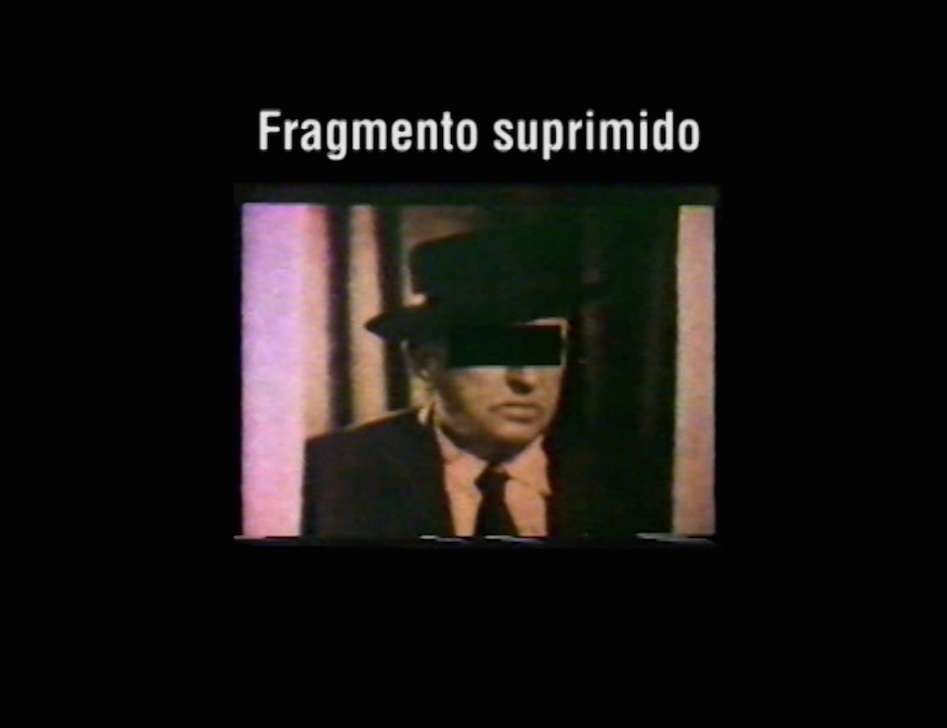
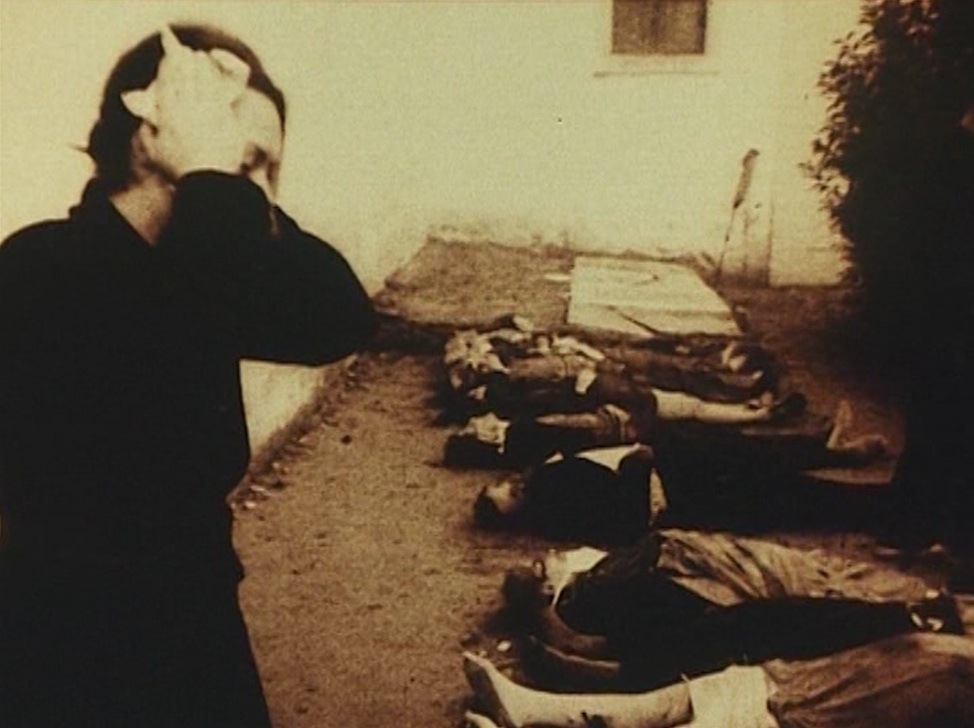
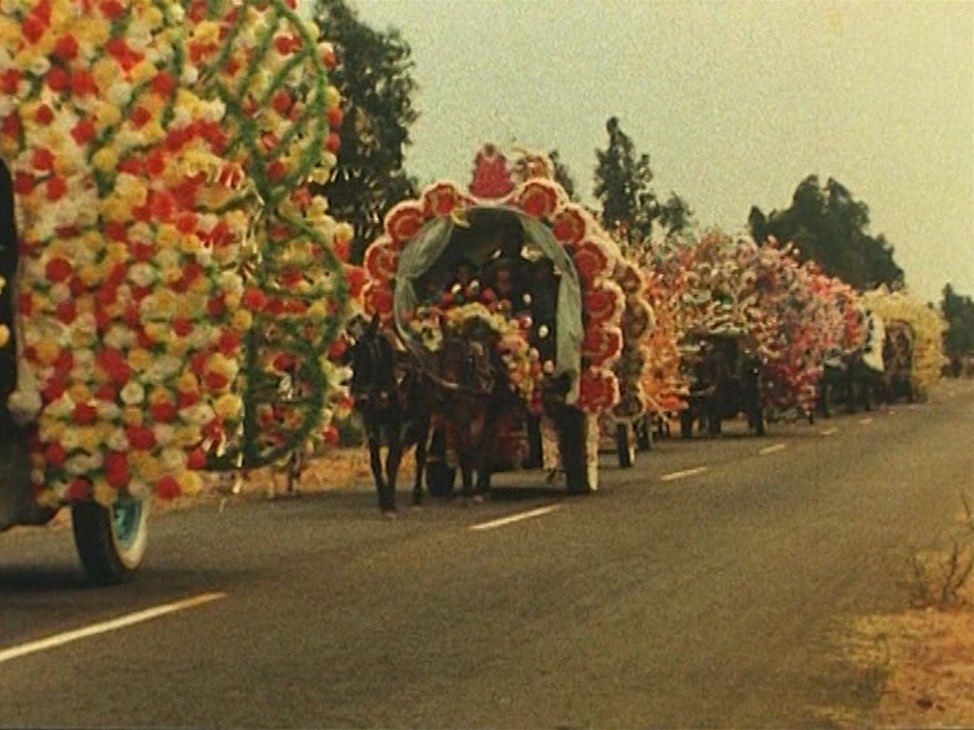
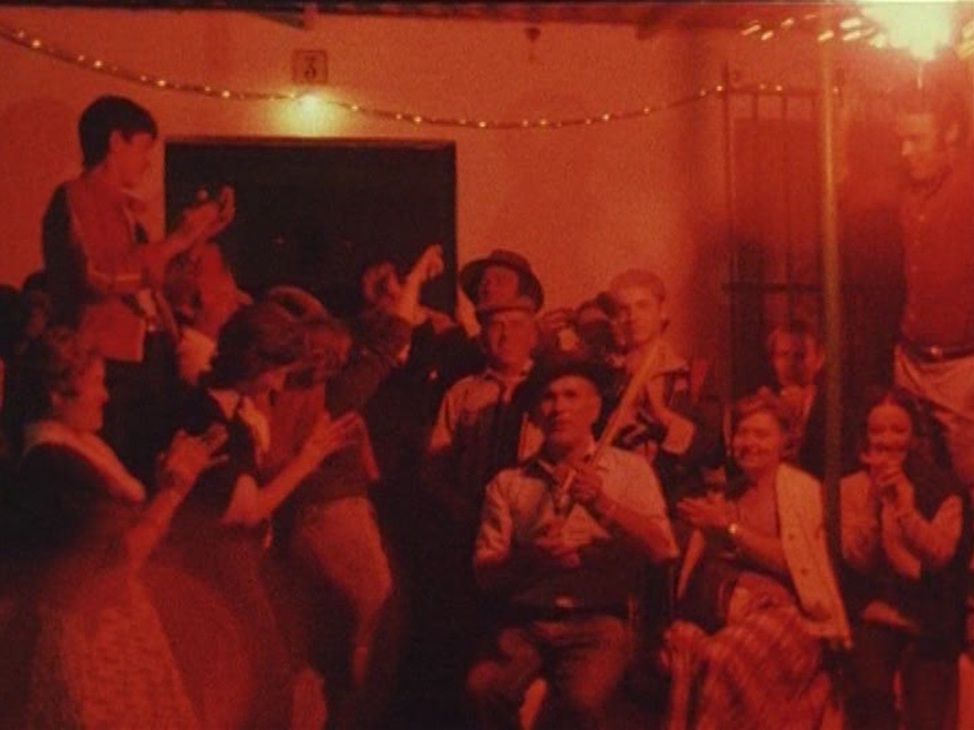
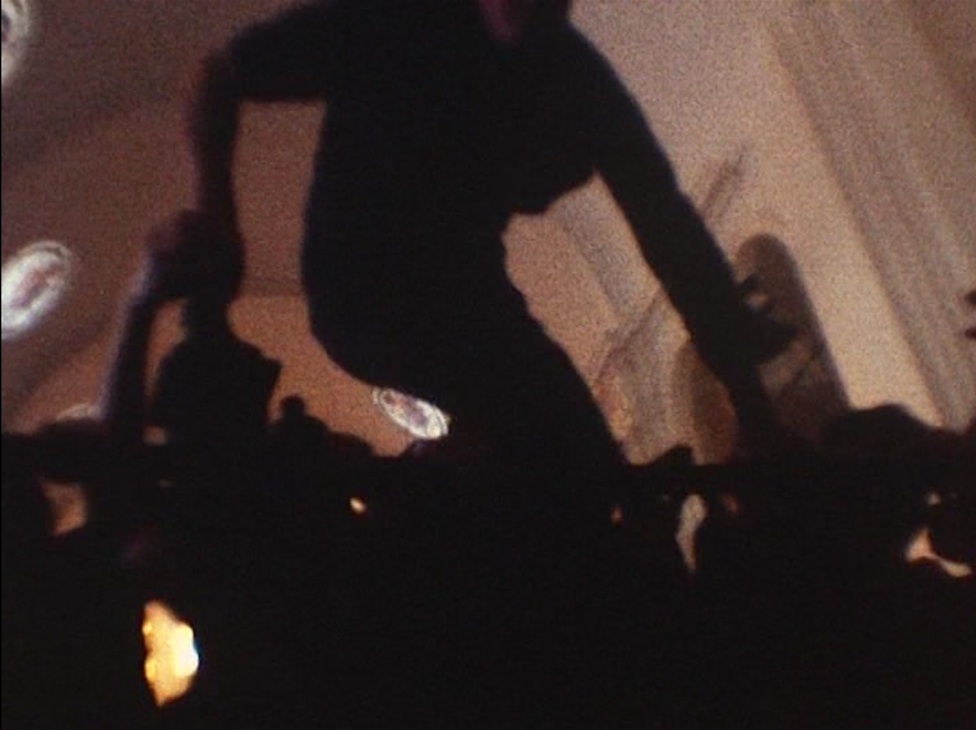
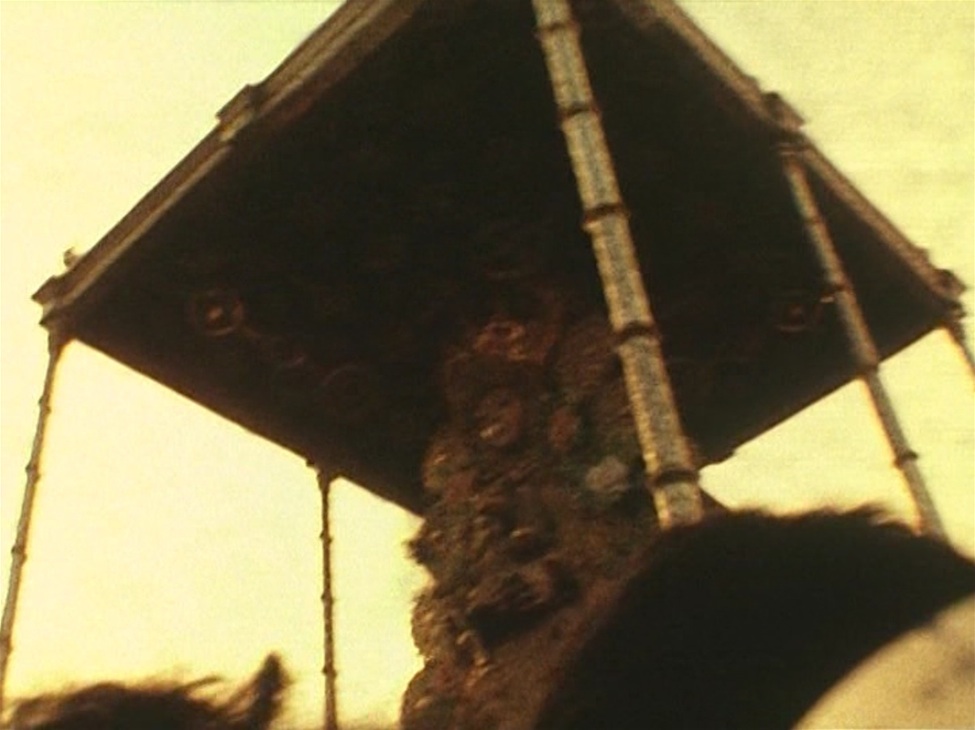
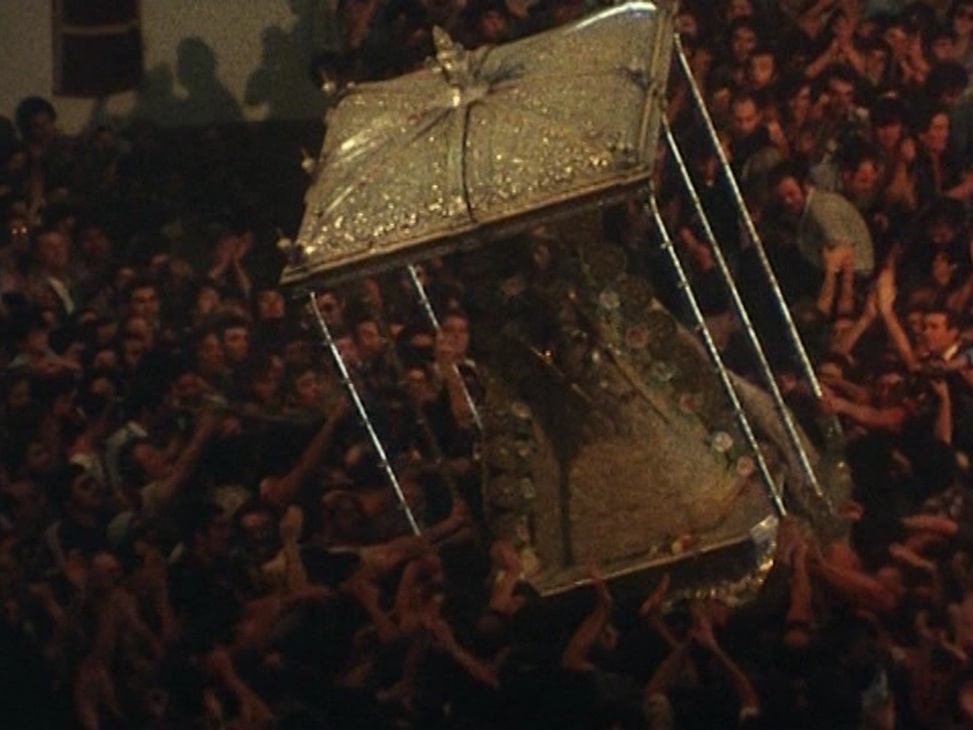
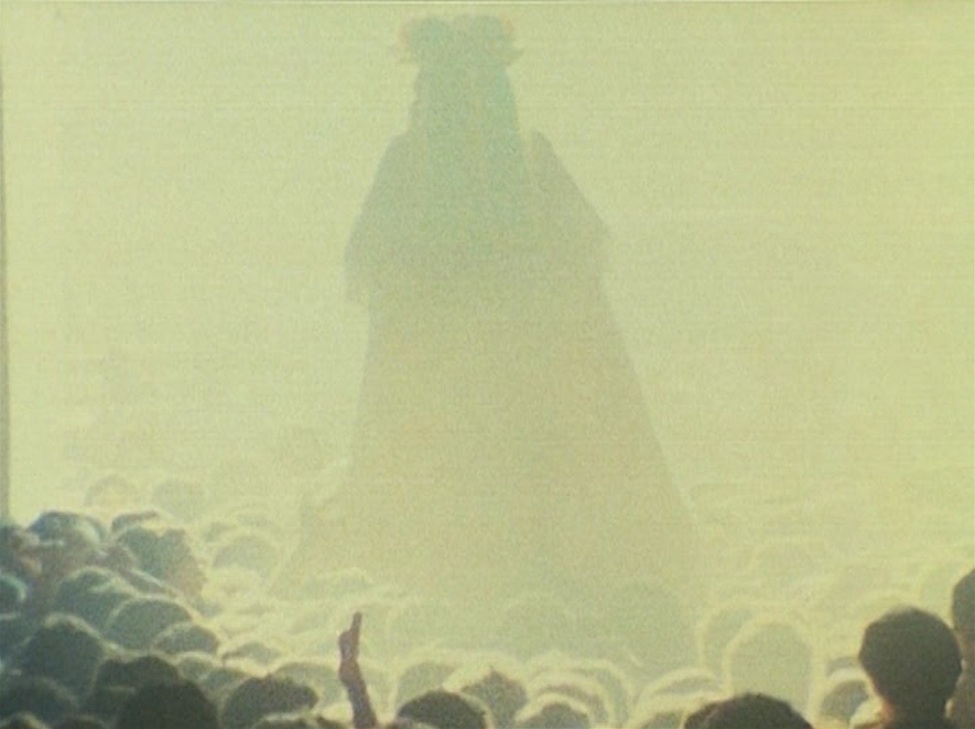
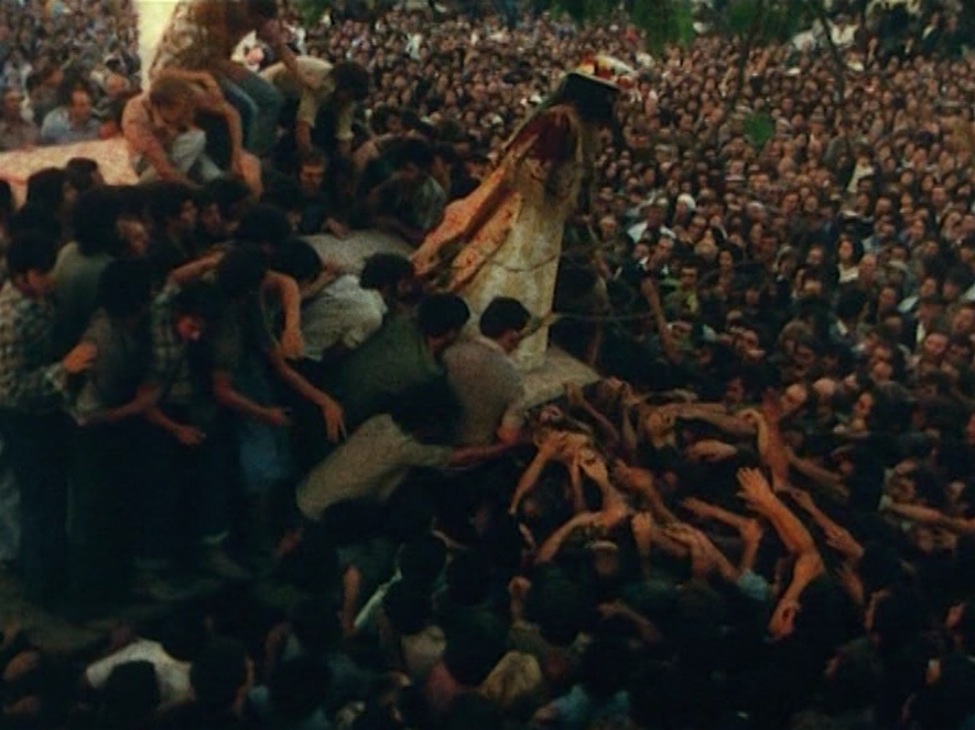
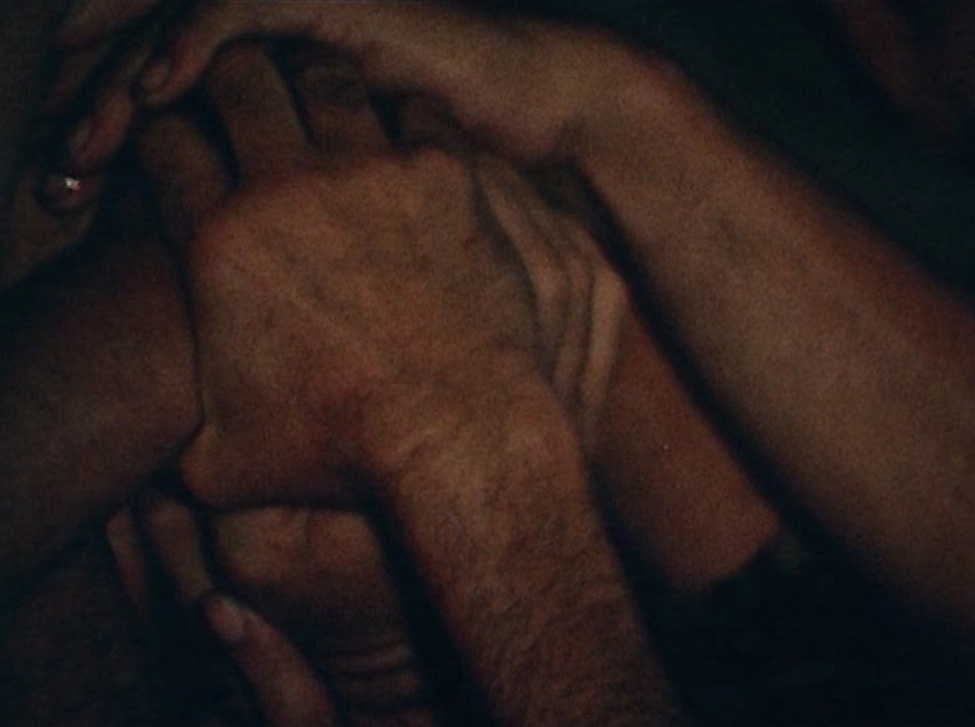






[…] Study of controversial Spanish documentary ROCÍO, also at MEDIÁTICO […]